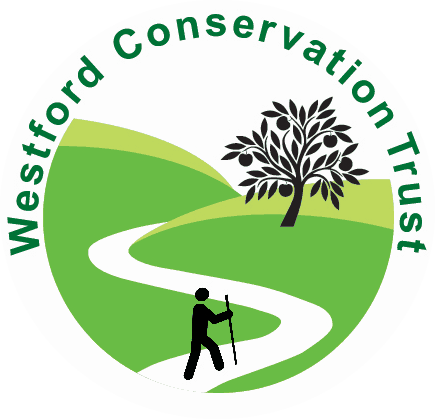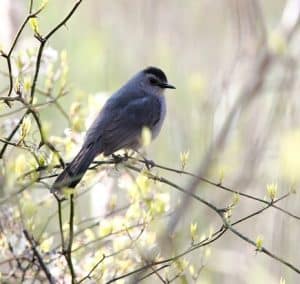How are the birds doing in North America?
To answer that question, the North American Bird Conservation Initiative, a consortium of forty conservation organizations and government agencies has just published an important new document titled “The State of North America’s Birds”. More than 350 species of our migratory birds, such as the gray catbird, Baltimore oriole, and the wood thrush pass between Canada, the United States, and Mexico. The report combined citizen science bird data, collected on platforms such as e-Bird, to come up with the 2016 status report on the birds of all three countries, a total of 1,154 species.
The reports’ findings are alarming. It placed 37% of North American birds on a Watch List for Species in Urgent Need of Conservation. For some habitats birds are even more imperiled. For instance, 57% of ocean birds are on the Watch List. Birds of tropical forests, coasts, arid lands and grasslands are also in steep decline. For these habitats, up to 56% of bird species are in decline. In other habitats, such as temperate forests, tundra, wetlands, and boreal forests, up to 27% of bird species are on the Watch List. Westford is a temperate forest habitat, but our migratory birds spend the winter in the tropical forest.
One hundred years ago, Canada, Mexico and the US signed the Migratory Bird Treaty in order to protect our shared heritage in birds. Now on the centennial of this treaty, we need to step up our cooperation to protect bird habitat. Keeping oceans clean and free of plastic waste, doing what we can to slow and stop global warming, and especially protecting breeding and wintering habitat for birds, will all be required. As consumers, we can add to citizen science data by watching birds and logging our bird sightings in on e-Bird. We can stop using plastic bags, buy bird-friendly shade-grown coffee, and vote to protect open space. What’s good for birds is also good for our own survival.
David Moon, Sanctuary Director of Mass Audubon’s Joppa Flats Education Center, puts it this way, ” It might be good to reflect on why it is important to go out to see birds. It’s a matter of paying attention and spending time on something of great value. Your attention and your time are valuable…. you spend the hours and the perception you can afford, to the beautiful and important creatures that arose from the dinosaurs to grace our world. If they thrive we will thrive, and because as an entire population we don’t know well enough how to live with the earth, some of us must invest part of our lives watching the creatures that tell us how the world is faring and reminding us how precious it is. Watch birds as much as you can, whether alone, with your dog, with others who share your love of them, or best of all with others who will learn to love them. Our attention and the actions it engenders have saved, protected and restored so many acres, so many lives. ”
To see the full State of the Birds report, go to www.stateofthebirds.org.
Many thanks to all flora and fauna reporters for the month of July. Please send reports by August 26 for inclusion in next month’s column. You can write me at 10 Chamberlain Rd., call me at 692-3907, or e-mail me at mariancharman@verizon.net.
——————————————————–
Late June Reports:
Dot Mooney, Monadnock Dr. June 21, two hairy woodpeckers, one downy on suet, blue jays, male rose-breasted grosbeak on feeder. June 22, hairy woodpecker feeding a youngster, two doves on deck, one a juvenile. June 23, at Howard Rd. wetland, purple loostrife blooming, warbling vireo, duckling, all alone, darted quickly into arrowhead. Other arrowheads being tugged down into water, and saw a six-inch painted turtle doing the tugging. At least three more turtles swimming in same area. June 27, eight doves eating seeds. June 29, three young downies at suet. June 30, little house wren chattering in back woods. At Beaver Brook Rd., one greyish baby swan with parents now. White water lilies, pickerelweed, swamp milkweed blooming, a buttonbush coming up. Heard a warbling vireo. By wetland on Howard Rd, at least five turtles popped heads up here and there, a great blue heron moving at far edge of cattails. Also saw chicken — someone’s hen out for a walk!
Rosemarie Koester, Providence Rd. June 27, spotted turtle next to our garage and then on to lawn.
Marian/Bill Harman, Chamberlain Rd. At Grassy Pond, June 29, area around pond is a bog. It has sphagnum moss, sundews, common pipewort. At home, baby cardinal being fed by father. A walk at Grassy Pond: water almost all dried up- a lingering tiny pool with a great blue heron hunting in it, and white pond lillies wilting. About 2/3 from the edge the land turns boggy with sphagnum moss and many sundws Around the path the mountain laurel has just finished blooming, many grasses, sedges and rushes in the pond. Birds seen or heard: cardinal, mourning dove, chipping sparrow, crow family, catbird, chickadee, white-breasted nuthatch, blue jay, downy woodpecker, titmouse. Also deer flies, grey and red squirrels, chipmunks.
July Reports:
Dot Mooney, Monadnock Dr. July 1, “One bat fluttered by around dusk. A house wren had been chattering til’ sunset, then he turned it over to a robin. Soft breeze catching the aspen leaves, a lovely summer evening.” July 2, house finches trying to find some seed for begging babies. Handsome male grosbeak a frequent visitor. July 5, three turkey vultures overhead. fragrant common milkweed in bloom along back lawn. Red-tailed hawk over woods. July 9, visiting feeder by edge of woods, three titmice, chickadees, chipping sparrows, cardinals, blue jays, several dove on ground. Suet basket always popular with all woodpeckers, other small birds and blue jays. July 12, still dark at 4:45 a.m., cardinal and catbird already singing cheerfully in woods. At Howard Rd. wetlands, mid afternoon, lots of arrowhead bent over into water, and numerous little painted turtles sunning themselves on large arrowhead leaves. They were less than 4 inches long, and were everywhere. Purple loostrife in water, fragrant swamp honeysuckle blooming at water’s edge–no chicken today. July 13, A catbird’s random chatter became serous “mews” for awhile, then back to chatter. Poor Grassy Pond! Its so dry, its hard to picture myself walking around the pond and watching a cormorant sit on rocks in the center of the water. July 14, lovely doe walking in grass, 5:30 am. Family of blue jays around, several noisy youngsters pursuing parents. A squirrel shakes its fists at the feeder, then returns to try again. Five turkeys on ground under feeder. July 15, two deer in their soft, reddish-brown coats, one a doe, one a four-point buck in new antlers still velvet-covered. They seem shiny and healthy, sharing a pleasant moment in the wildflowers. July 16, one bat darting over lawn doing his job at 4:50 a.m. Two white-breasted nuthatches seem to be having a discussion. Feeder busy all day. July 17, back woods full of morning bird song. A wood thrush has added his voice for awhile. Evening, seven doves on ground. July 18, little family of chipping sparrows out front busy on ground, waiting to get on feeder. July 20, heads on sumac bushes showing more color….in the end they will all be beautiful. Chatty catbird nearby. “All of the birds sound as cheerful as can be on this lovely summer morning. I guess we all feel the same way.”
Doug Pederson, Woodland Dr. July 4, common yellowthroat warbler, cat bird, turkey vulture, black-billed cuckoo in Harvard at Oxbow refuge. Lovely cooper’s hawk on tree in yard.
Kate Phaneuf, Drawbridge Rd. July 5, hawk (I think a broad-winged hawk) sitting on top of chimney cap, scanning. On Rt. 110 near post office, a killdeer running around in the grass. Possible raven soaring over Cornerstone Square area. A little rabbit often visits in yard, nibbles at the moss.
Marian/Bill Harman, walk on Rome Drive. July 4, scarlet tanager singing, wood thrush singing. July 7, three great-spangled fritillaries on the bee balm. July 8, saint johnswort, milkweeds, walnut tree, norway maple, white pine, virginia creeper, grass pink, daisy fleabane. July 10, walk on trail near Blake’s Hill Rd., wood thrush, robins, chipping sparrow, Indian cucumber, common yellowthroat, song sparrow, red-winged blackbirds, chickadees, house finch, wild indigo, white-tailed deer, dogbane, parula warbler, mourning dove, chimney swift, tree swallows, pileated woodpecker, catbird, goldenrod, honeysuckle, bush honeysuckle, St. johnswort, sweet fern, pussy toes, red cover, four great blue herons in marsh, oriole family, red squirrel, scarlet tanager, great-crested flycatcher, sassafras trees, blue-headed vireo, seven heron nests, two have birds on them, two adult herons, one juvenile, kingfisher, cowbird, bracken fern, mosses, wild strawberry, red-eyed vireo, butte and eggs, two barn swallows. July 12, male rose-breasted grosbeak on the feeder.
Marilyn Day, Graniteville Rd. July 9, red squirrels cutting off tips of our spruce trees [to get the cones which were attached-MH]. Female and juvenile rose-breasted grosbeaks are constant visitors. I haven’t seen the male since June.
Flavio Fernandes, Vineyard Rd. July 13, two red-tailed hawks on deck railing, one drinking water from a container and calling parents.
Debbie Prato, Hayrick Lane. July 24, my vegetable garden has been completely devoured. July sightings: mallards, turkey with no tail, woodchuck, Baltimore oriole, crow, yellow warbler, cottontails, turkey vultures, rose-breasted grosbeaks.
Rosemarie Koester, Providence Rd. July report: lots of fledglings–fun to watch them begging for food and trying to fly to feeders. Two pairs of cardinals, two juveniles. chickadee, tufted titmouse, two blue jays, female downy woodpecker, red-bellied woodpecker, one young pileated woodpecker pecking away at a hollow tree in the woods. July 3, my first Baltimore oriole at feeder, several cowbirds, six grackles, six doves, group of red-winged blackbirds, males, females, juveniles. Male and female hummingbirds at two feeders. They are territorial and will chase one another off. I have to fill feeders almost every day. When I took the feeder down to fill, two hummers were at the window, looking inside for food. Bird bath is constantly in use. I put an extra dish on the ground. The birds need the water. Two mama turkeys with 8 and 12 little ones. Six gray squirrels, one or two red squirrels, chipmunks, garter snake, several rabbits, heard group of coyotes howling one night, nest of wasps in gutter.
Marian Harman, director emeritus, is a member of the Westford Conservation Trust, a non-profit conservation organization, whose purpose is the protection of open spaces and trails.

